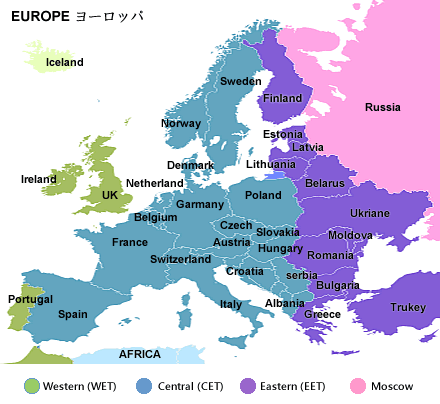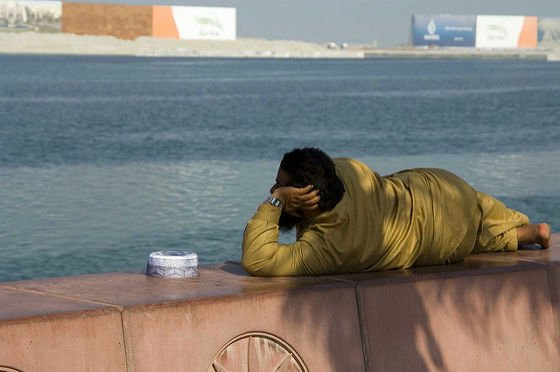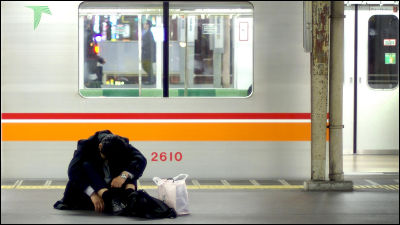Activate move to change the lifestyle of 'Siesta' rooted in Spain

ByEjbSF
In Spain we take a 2-3 hour break for lunch and take a napSiesta"It is said that the culture called root is rooted, but by finishing its lifestyle and incorporating the life cycle equivalent to other countries, the movement to acquire economic competitiveness It is springing from Spain in Japan.
What's the Deal with the Crazy Spanish Workday? - CityLab
https://www.citylab.com/life/2017/07/say-goodbye-to-spains-glorious-three-hour-lunch-break/534120/
110 specialized organizations in Catalonia region are planning to abolish the traditional long lunch break by mid July 2017, so that workers will finish their work at an earlier time by 2025Reforma Horària(Translated: "time reform").
Objectiu 2025 reforma horària

It is considered that this movement will become a major change in "how to work" in Spain. A long lunch break spanning two to three hours, which is said to be unique to Spain, has been cultivated due to Spain's inherent geographical conditions and historical background, but due to this influence, workers will have to finish their work late, It is said that the time to go to sleep is getting late as the dinner and leisure time after that is gradually postponed. As a result, the average sleeping time of Spaniards is one hour shorter than other EU countries, and statistical results are also taken.
Whether it is taken as "strengthening economic competitiveness by improving the working environment" or "destruction of Spanish life" can be said to be different for each person, but this necessarily means that "the end of Siesta culture" It is said that it does not become. Otherwise, it is a siesta that is received "stereotypically" as a "three-hour nap every day", but in reality it is said that the culture has already ended decades ago.
The current Spanish job timetable will start work from 8 o'clock in the morning and 9 o'clock in the morning and take lunch break from 13:30 to 14:30 a bit late from noon. From there, depending on the person, after taking a break for 3 hours at maximum, I resume work from around 17 o'clock and will have a pattern to finish my work and arrive home around 20 o'clock. It seems that people of the type that are categorized as business people in particular are sometimes not applicable to this pattern, but rather it is said that there is a problem in the place where working hours up to around 20 o'clock are generalized .

ByFranck Michel
And, as late arriving time goes late, supper time will be delayed, then relaxing afterwards, and time spent on hobbies and entertainment will tend to be late. Therefore, many Spaniards tend to have many people fall asleep at midnight.
It is said that this "Siesta culture" was born due to the geography of Spain. Because the strong sunshine strikes Spain which is located south compared to other European countries, especially in the afternoon the temperature gets too high and the situation will be such that it can not work properly. Especially when many people were engaged in farming, it is a remarkable problem. People go home and take a long break during the daytime hours that are too hot, resume their work as soon as the temperature drops It has become calm in the life pattern.
When this lifestyle pattern was born, it was common that the place of work is near the home. However, as in the present age, when many people work in urban areas, it will take time even if you return home, and as many people move, traffic congestion occurs in urban areas and adverse effects on urban functions It is said that it is giving. Also, it is said that even during the peak season when Siesta was actively playing, she was doing her household work sparingly while actually taking a nap.
Even more interesting is the facts related to the time zone Spain adopts. Spain belongs to the westernmost region of Europe, and the time zone is the same as Britain and PortugalWestern European TimeAlthough it can be said that it is appropriate, in fact it isCentral European TimeIt belongs to. In other words, in Spain, one day begins one hour earlier than originally, and noon arrives one hour earlier. This is due to the fact that Prime Minister Franco chose the same time zone as Nazi Germany at the time of World War II and that influence is still dragging still.

ByWorld Time Zone Map
The Reforma Horària campaign is aimed at matching this kind of life cycle, especially on weekdays, to conform to the work style of other EU countries. This exercise not only changes jobs but also the school timetable, as well as eliminating the traffic congestion in the afternoon and reducing the number of shops closed during lunch will also make life more convenient It is said to be there. Also, since the prime time (the golden time) of the television is now late at night, the bedtime of people has indeed slowed down, but this harm is improved by the earlier returning home time It is also expected.
It is also interesting that this movement is occurring in Catalonia. Since the Catalunya region, which is in contact with the French border and aiming for independence from Spain, is located in northern Spain, it is said that the need for Siesta is not so high as the climate is milder than in the southern part. It seems that the aim is to clarify the attitude of "desp Spain · parent EU" by abolishing the siesta which can not be said to be in line with the style of EU countries. Although the Spanish government has also indicated a move aiming to escape from Siesta, concrete timeline for realization has not been shown yet.
However, whether or not this movement will actually be realized is said to be a subtle problem. As mentioned earlier, Spanish time is set one hour earlier than the original figure should be, so the sunSouth middleThe real "noon" you do is around Spain time around 13 o'clock. As a result, the nighttime visit has become a later time than originally, and there is a background that the tendency to stay up late increases in a chain. Also, it is another matter whether or not people 's lifestyles will actually change even if the system is adjusted. The tendency of siesta and night owl is said to be due to the feeling of "I want to do" rather than "because it is necessary." Changing people's lifestyles may not be easy on their own.

ByKatja
Related Posts:
in Note, Posted by darkhorse_log







